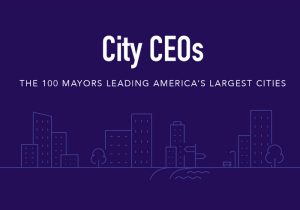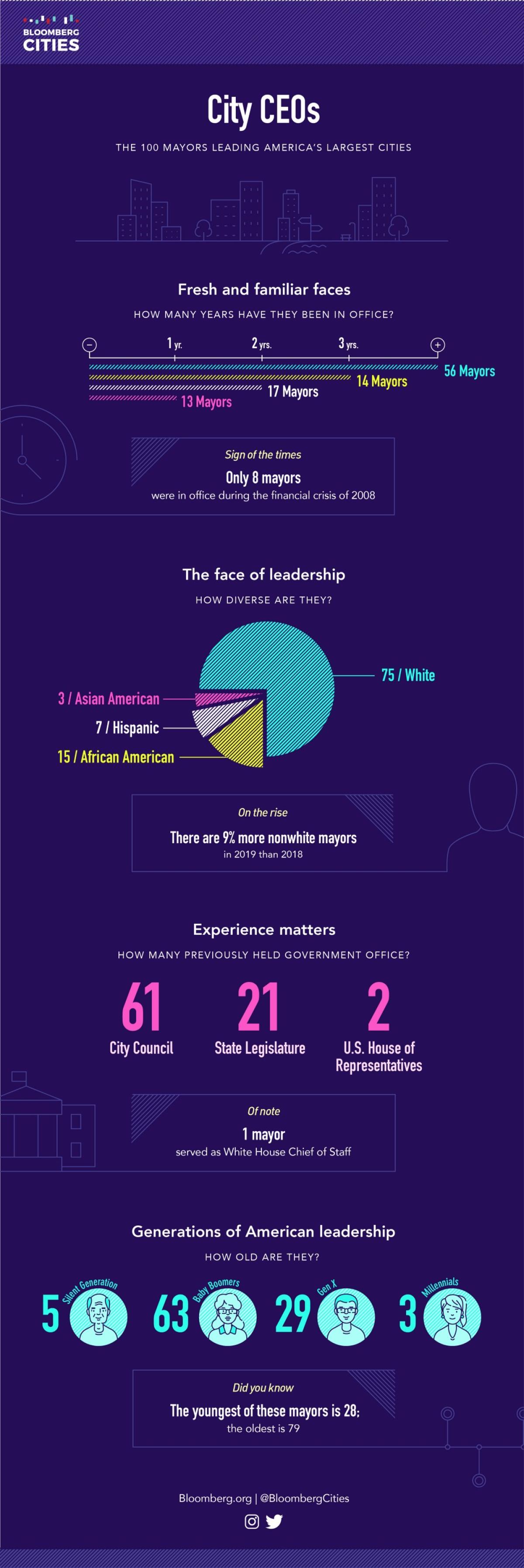City CEOs: Who’s leading America’s 100 largest municipalities?

As hundreds of mayors from across the United States gather in Washington, D.C., this week for the annual winter meeting of the U.S. Conference of Mayors, Bloomberg Cities takes a closer look at the mayors who lead America’s 100 largest cities. How long have they been in office? How diverse are they? How old are they? And what experience did they bring to city hall? Answers to these questions could shed light on how these mayors, together with all those meeting in D.C. this week, continue to tackle the mounting issues facing America’s cities today.
*Our analysis includes census-designated, incorporated places (cities, towns, or villages) that have independent and legally defined powers and functions.
Tenure: Among the 100 mayors governing America’ cities, 13 took office within the past year. Another 17 mayors were first elected in 2017, with another 14 in 2016. Altogether, two-thirds of these mayors have six or fewer years in office, with eight predating the Great Recession of 2008.
Demographics: As the country’s demographics have changed, so have those of mayors. The share of nonwhite mayors increased by 9 percent over the past year, reflecting the election of two new African American mayors among the 100 largest cities. Perhaps echoing national trends, the share of female mayors also rose last year, by 25 percent.
Experience: It is perhaps no surprise that these municipal CEOs have prior public-sector experience — 61 percent served on the city council, 21 percent were in the state legislature, and 2 are former Members of Congress. What is perhaps more surprising is that 55 percent have private sector experience.
Generations: While the average age of mayors has fallen over the past year — from 59 to 58 years old — there is little change in the generational cohorts government America’s largest cities. This is perhaps unsurprising given that older citizens are more likely to participate in local elections than younger ones.



